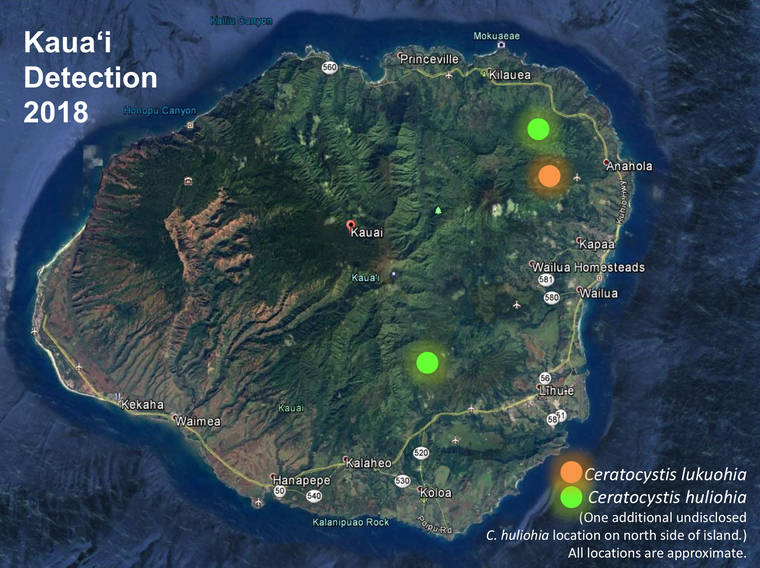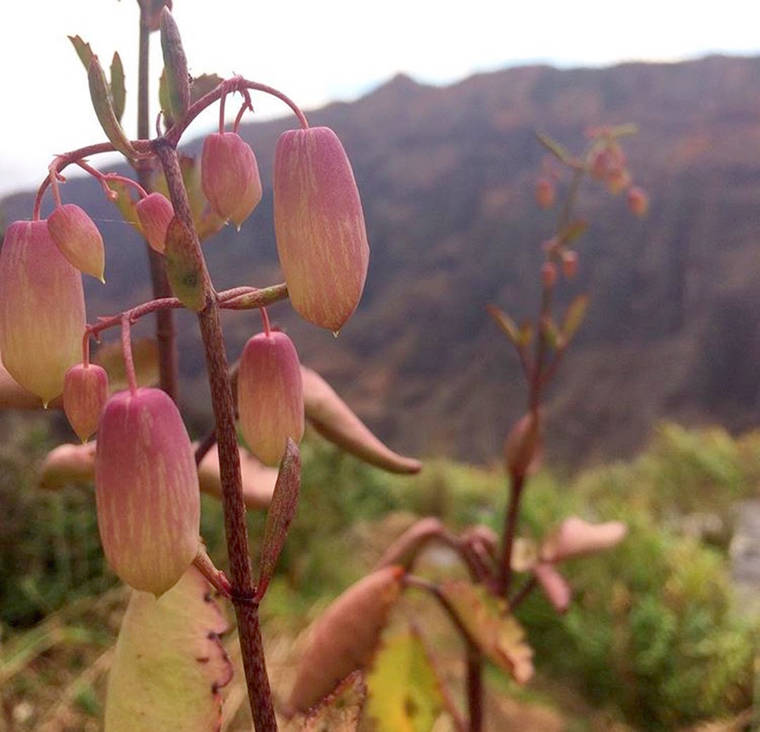LIHUE — Even before Kauai’s native ohia trees started showing signs of the fungus that causes rapid ohia death, biosantitation was already top of mind for many throughout Hawaii.
That’s because hitchhiking on humans is one of the most prolific travel methods for invasive plants, insects and other species. Take the rat, for example. The first to arrive in the islands were stowaways on Polynesian vessels that landed on Hawaii Island some 900 years ago.
As humans sailed throughout the islands, so did the rats.
Miconia was brought to Hawaii Island as an ornamental plant by a Hilo resident in 1961. Today, it’s telltale green and purple leaves are choking out other vegetation throughout the Main Hawaiian Islands, and it’s known as the “green cancer” of Hawaii’s forests.
Now that it has a foothold, the plant relies on birds to quickly distribute its seeds.
Coqui frogs and little fire ants landed in the islands through a shipment of plants, and mongoose were released in Hawaii as a management option to combat the rats.
And the invasive fungus that’s killing ohia trees seems to travel in sawdust form on the wind, or clinging to hiking boots, tires and undercarriages.
Discovered on Hawaii Island in the ‘90s with origins unknown, the two types of fungus that cause ROD were found on Kauai in May and December 2018. The fungus kills the trees by entering through a wound in the bark, getting into the vascular system and cutting off its water supply.
Now, biosanitation workshops are teaching tour operators how to make sure all those hiking boots and undercarriages are ROD-fungus-free after a day of rambling through the forests.
The next free Kauai workshop is Monday, May 20 at the Kauai Community College Office of Continuing Education and Training room 106.
“It’s geared for eco-tour operators and focuses on rapid ohia death and more invasive species,” said Kim Rogers, Kauai ROD outreach specialist.
Joshua Nipp, owner of tour company Off The Beaten Path, was one of those in attendance, and said the workshops are exactly what he was envisioning before ROD was discovered on Kauai.
Nipp has been an advocate to establish a biosanitation certification program for land-based tour operators along the lines of the Kauai Invasive Species Committee’s Plant Pono program. That program certifies landscapers and nurseries that take steps to protect the island from invasive species.
“I went to KISC and asked them to do a presentation on cleaning our shoes and our cars. They said ‘sure,’” Nipp said. “Maybe two days later, the whole ROD thing exploded and we turned it into an ROD training.”
While emphasis is on how to prevent the spread of ROD, overall biosanitation is still very much part of the presentation.
“It’s very informative and it brought a lot of the tour people together,” Nipp said.
The presentation includes literature, hands-on instruction on how to powerwash vehicles, and demonstrations on how to clean boots and shoes.
“They give you a kit, too, which is really awesome,” Nipp said. “Every person gets this thing you screw into your bumper and it’s a mobile boot brush. I’ve already handed out the fliers (about ROD) a lot.”
Maria Camero, of Kauai Soul Travel, said the workshops are invaluable for residents, tour operators and visitors alike — anyone who is planning on being in the forest on Kauai.
“By creating awareness through workshops, word of mouth, and making it a requirement for any job in the tourist industry, we will be able to better prevent the spread of ROD,” she said. “Before I attended this workshop I have heard of ROD but I was not fully educated on how to proceed about biosanitation, how to recognize the ROD if I saw it, and who to report it to.”
The workshop is open to anyone who wants to get up to speed on how to preserve Kauai’s forests.
More info, or to register: rapidohiadeath.org
•••
Jessica Else, environment reporter, can be reached at 245-0452 or jelse@thegardenisland.com.




